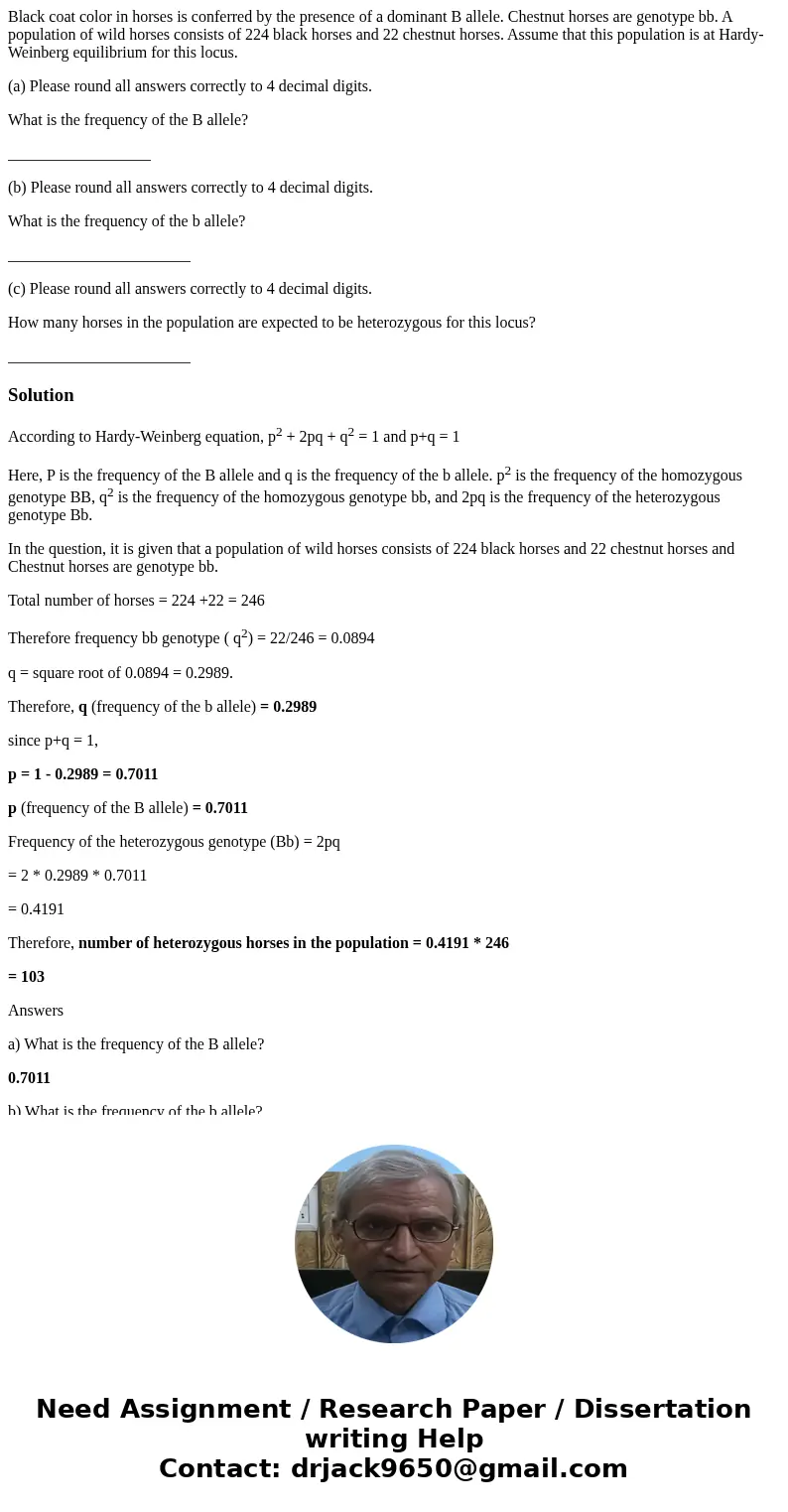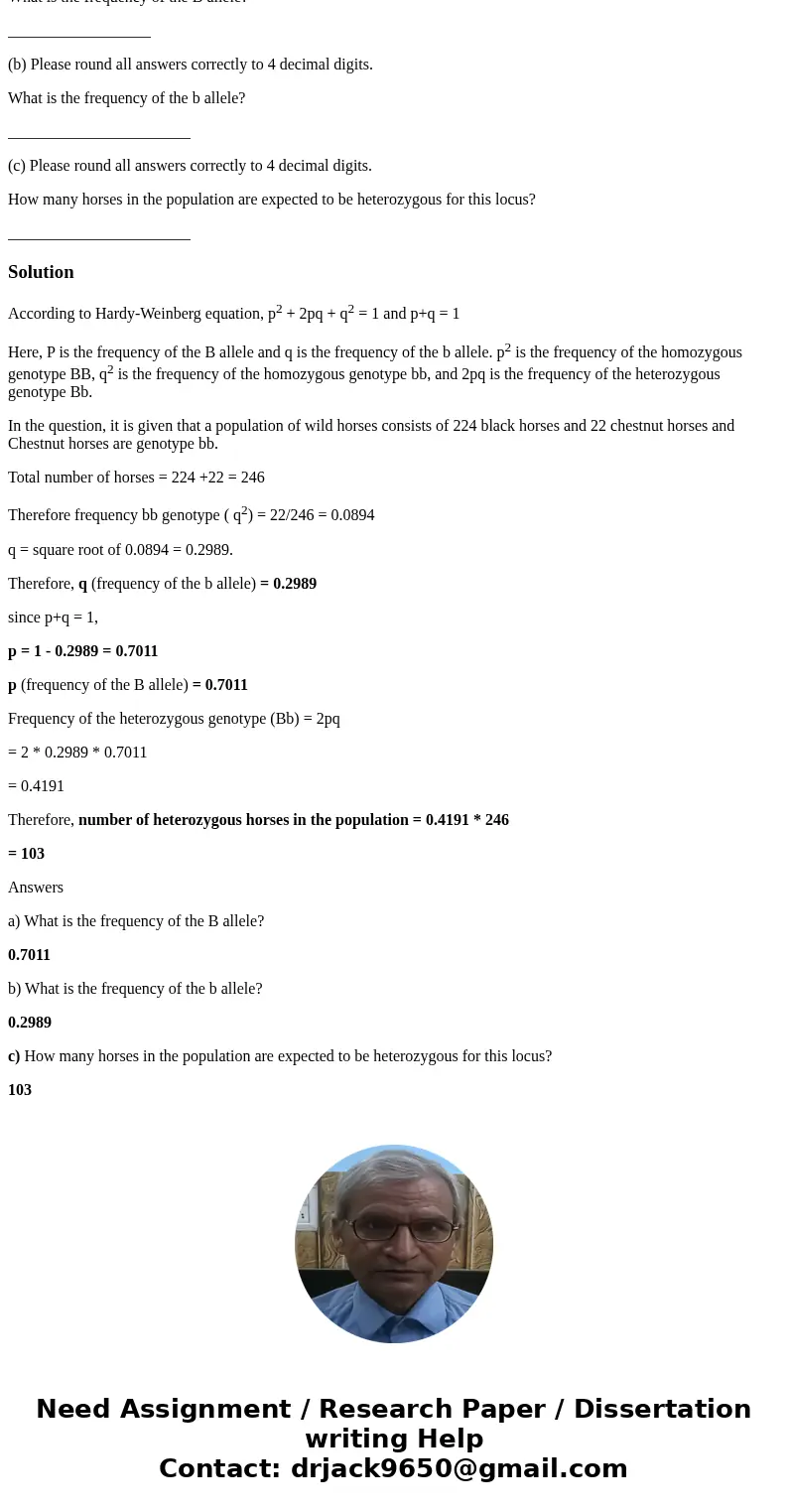Black coat color in horses is conferred by the presence of a
Black coat color in horses is conferred by the presence of a dominant B allele. Chestnut horses are genotype bb. A population of wild horses consists of 224 black horses and 22 chestnut horses. Assume that this population is at Hardy-Weinberg equilibrium for this locus.
(a) Please round all answers correctly to 4 decimal digits.
What is the frequency of the B allele?
__________________
(b) Please round all answers correctly to 4 decimal digits.
What is the frequency of the b allele?
_______________________
(c) Please round all answers correctly to 4 decimal digits.
How many horses in the population are expected to be heterozygous for this locus?
_______________________
Solution
According to Hardy-Weinberg equation, p2 + 2pq + q2 = 1 and p+q = 1
Here, P is the frequency of the B allele and q is the frequency of the b allele. p2 is the frequency of the homozygous genotype BB, q2 is the frequency of the homozygous genotype bb, and 2pq is the frequency of the heterozygous genotype Bb.
In the question, it is given that a population of wild horses consists of 224 black horses and 22 chestnut horses and Chestnut horses are genotype bb.
Total number of horses = 224 +22 = 246
Therefore frequency bb genotype ( q2) = 22/246 = 0.0894
q = square root of 0.0894 = 0.2989.
Therefore, q (frequency of the b allele) = 0.2989
since p+q = 1,
p = 1 - 0.2989 = 0.7011
p (frequency of the B allele) = 0.7011
Frequency of the heterozygous genotype (Bb) = 2pq
= 2 * 0.2989 * 0.7011
= 0.4191
Therefore, number of heterozygous horses in the population = 0.4191 * 246
= 103
Answers
a) What is the frequency of the B allele?
0.7011
b) What is the frequency of the b allele?
0.2989
c) How many horses in the population are expected to be heterozygous for this locus?
103


 Homework Sourse
Homework Sourse